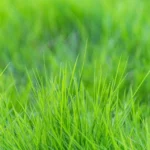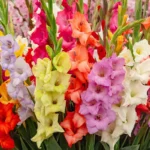
Welcome to our exploration of one of nature’s most delightful blooms—the Black-eyed Susan! With its vibrant yellow petals and striking dark center, this perennial flower is not only a favorite among garden enthusiasts but also a significant player in various ecosystems. In this blog, we will delve into 25 fascinating facts about the Black-eyed Susan, uncovering its unique characteristics, growth habits, cultural significance, and much more. Whether you’re a seasoned gardener looking to expand your knowledge or simply curious about this beautiful flower, join us as we celebrate the charm and resilience of the Black-eyed Susan!
Family: Black-eyed Susan is part of the Asteraceae family, which is one of the largest families of flowering plants. This family includes a variety of well-known plants, such as sunflowers, daisies, and asters. Members of the Asteraceae family typically have composite flowers, meaning that what appears to be a single flower is actually a cluster of many small flowers (called florets) grouped together. This family is known for its diversity, with over 23,000 species worldwide, and many of its members play significant roles in ecosystems as food sources for pollinators and wildlife.
Native Range: Black-eyed Susan is native to North America, specifically found in the eastern and central regions. Its range extends from southern Canada down to the southern United States, thriving in various habitats, including prairies, meadows, and open woods. The plant’s adaptability to different soil types and conditions has contributed to its widespread presence across diverse landscapes. This native status not only highlights its ecological importance in local ecosystems but also makes it a popular choice for gardeners looking to support native wildlife.
Common Names: In addition to its scientific name, Rudbeckia hirta, Black-eyed Susan is commonly referred to as gloriosa daisy and yellow daisy. The name “Black-eyed Susan” is derived from the characteristic dark brown or black center of the flower, resembling an eye, surrounded by bright yellow petals. The term “gloriosa” reflects the plant’s vibrant and showy appearance, which makes it a favorite among gardeners and floral designers. These common names often vary regionally, reflecting the plant’s popularity and cultural significance.
Lifespan: Black-eyed Susan is classified as a biennial or short-lived perennial plant. As a biennial, it typically completes its life cycle over two years, growing foliage in the first year and flowering in the second. However, in some environments, it can behave like a perennial, returning year after year. This characteristic allows the plant to establish itself in various habitats, contributing to its resilience and ability to thrive in less-than-ideal conditions. The short lifespan can also encourage gardeners to treat it as an annual, replanting it for consistent blooms.
Height: The typical height of Black-eyed Susan ranges from 1 to 3 feet. This moderate height makes it an excellent choice for both garden borders and mixed flower beds, providing a cheerful splash of color without overwhelming other plants. Its upright growth habit allows it to stand out, especially when planted in groups. The height can vary depending on growing conditions, such as soil fertility, moisture, and sunlight availability, with plants in optimal conditions often reaching the upper end of this range.
Flower Color: The striking flowers of Black-eyed Susan are characterized by their bright yellow petals that radiate from a prominent dark brown or black central cone. The contrast between the vibrant yellow and the dark center creates a visually appealing display that attracts various pollinators. Each flower head can contain numerous individual florets, which collectively form the larger flower we see. This color combination not only enhances the aesthetic appeal of gardens but also plays a crucial role in attracting bees, butterflies, and other beneficial insects.
Blooming Season: Black-eyed Susan typically blooms from late spring to early fall, with peak flowering occurring in mid-summer. This extended blooming period provides a continuous source of color in gardens and landscapes, making it a popular choice for gardeners looking to create vibrant displays throughout the growing season. The flowers open gradually, with new blooms appearing over several weeks, ensuring that the plant remains visually appealing for an extended time. This characteristic also supports pollinators, offering them sustenance throughout the summer months.
Pollinators: The bright flowers of Black-eyed Susan are known to attract a variety of pollinators, including bees, butterflies, and other beneficial insects. The plant’s structure and color make it particularly appealing to these creatures, which play a vital role in the pollination of many flowering plants. By providing a food source for pollinators, Black-eyed Susan contributes to the overall health of ecosystems and supports biodiversity. Gardeners often plant Black-eyed Susan specifically to encourage pollinator activity, recognizing its importance in sustaining local wildlife.
Soil Preference: Black-eyed Susan prefers well-drained soil and exhibits a remarkable ability to tolerate poor soil conditions. It can thrive in sandy, loamy, or even clay soils, making it a versatile choice for various garden types. While it does well in fertile soil, it is not overly demanding and can adapt to less-than-ideal conditions. This adaptability to different soil types contributes to its widespread presence in natural habitats and makes it an excellent choice for low-maintenance gardens or those looking to restore native plant communities. Its tolerance for poor soils allows it to thrive in areas where other plants may struggle, making it a resilient option for gardeners.
Sunlight: Black-eyed Susan thrives in full sun but can also tolerate partial shade. Ideally, the plant should receive at least six hours of direct sunlight each day to promote healthy growth and abundant blooms. In full sun conditions, the flowers tend to be more vibrant and plentiful, attracting more pollinators. However, in regions with extremely hot summers, some afternoon shade can help prevent wilting and stress. This flexibility in sunlight requirements makes Black-eyed Susan a versatile addition to various garden settings, from sunny borders to partially shaded woodland gardens. By planting Black-eyed Susan in appropriate light conditions, gardeners can enjoy a long-lasting display of color throughout the growing season.
Watering Needs: Once established, Black-eyed Susan is drought-tolerant and requires minimal watering. This resilience to dry conditions makes it an excellent choice for low-maintenance gardens and xeriscaping, where water conservation is a priority. During its initial growth period, regular watering is beneficial to help the plant establish a strong root system. However, once the roots are deep, the plant can thrive on natural rainfall, making it suitable for areas with variable moisture levels. Overwatering should be avoided, as it can lead to root rot and other issues. This characteristic allows gardeners to enjoy vibrant blooms with less reliance on irrigation.
Wildlife Value: The seeds of Black-eyed Susan provide a valuable food source for various bird species, particularly goldfinches, which are known to feed on the seeds during late summer and fall. This wildlife value extends beyond birds; the flowers also attract pollinators like bees and butterflies, contributing to a healthy ecosystem. By planting Black-eyed Susan, gardeners can create a habitat that supports local wildlife, enhancing biodiversity in their gardens. Additionally, the plant’s ability to provide resources throughout different seasons makes it a beneficial addition to any landscape focused on wildlife conservation.
Medicinal Uses: Historically, Native Americans utilized Black-eyed Susan for various medicinal purposes, including treating colds, fevers, and other ailments. The plant was often brewed into teas or used in poultices for its believed healing properties. While modern herbal medicine recognizes the plant’s potential benefits, it is essential to approach any medicinal use with caution and consult knowledgeable sources. The historical significance of Black-eyed Susan in traditional medicine highlights its cultural importance and the relationship between plants and human health throughout history.
Cultivation: Black-eyed Susan is widely cultivated in gardens and landscapes for its vibrant flowers and ability to attract pollinators. It is often used in perennial borders, wildflower gardens, and as a part of mixed plantings. The ease of cultivation, coupled with its resilience to various growing conditions, makes it a favorite among gardeners. It can be started from seeds, which can be sown directly in the garden or started indoors for earlier blooms. Its popularity in horticulture has led to the development of numerous cultivars, each with unique characteristics, allowing gardeners to select varieties that best suit their aesthetic preferences and garden conditions.
Varieties: There are several cultivated varieties of Black-eyed Susan, including ‘Goldsturm’ and ‘Indian Summer.’ ‘Goldsturm’ is particularly well-known for its compact growth habit and abundant blooms, making it a popular choice for garden borders. ‘Indian Summer’ features larger flowers with a mix of yellow and orange hues, adding diversity to the traditional yellow color. These varieties have been selectively bred for specific traits, such as flower size, color, and growth habit, allowing gardeners to choose the best fit for their landscape. The availability of different varieties enhances the visual appeal of gardens while maintaining the ecological benefits of the species.
Invasive Potential: In some areas, Black-eyed Susan can spread aggressively, particularly in disturbed sites. While it is generally considered beneficial for native gardens, its ability to self-seed and thrive in various conditions can lead to it outcompeting other plants in certain environments. This potential for invasiveness is more pronounced in regions outside its native range, where it may disrupt local ecosystems. Gardeners should monitor its growth and manage its spread, especially in areas where it could threaten native species. Understanding its growth habits allows for responsible planting and maintenance practices.
State Flower: Black-eyed Susan is the state flower of Maryland, symbolizing the state’s natural beauty and agricultural heritage. Designated as the state flower in 1918, it is celebrated for its vibrant color and resilience, traits that resonate with Maryland’s identity. The flower is often associated with summer and is featured in various state-related events and promotions. Its status as a state flower emphasizes the importance of native plants in representing regional culture and ecology, fostering pride in local flora.
Companion Planting: Black-eyed Susan can be effectively used in companion planting to attract beneficial insects, such as pollinators and predatory insects that help control pests. When planted alongside vegetables and herbs, it can increase overall garden health by enhancing biodiversity. The presence of Black-eyed Susan can create a more balanced ecosystem, reducing the need for chemical pest control methods. Additionally, its vibrant flowers can provide visual appeal and attract pollinators that benefit nearby crops, making it a valuable addition to any garden designed with companion planting principles in mind.
Seed Dispersal: The seeds of the Black-eyed Susan (Rudbeckia hirta) are primarily dispersed by wind and birds once the flowers have died back. This natural process allows the seeds to travel significant distances from the parent plant, promoting genetic diversity and the establishment of new plants in various locations. The lightweight nature of the seeds aids in wind dispersal, while birds often consume the seeds and later excrete them in different areas, facilitating growth in new environments. This adaptation is crucial for the plant’s survival and proliferation in diverse habitats.
Foliage: The foliage of the Black-eyed Susan is characterized by its rough and hairy texture, which serves various ecological functions, including deterring herbivores. The leaves are typically lance-shaped and can grow up to 6 inches long, providing a striking contrast to the vibrant yellow or orange flowers. This robust leaf structure allows the plant to thrive in a range of soil types and conditions, contributing to its resilience. The leaves also play a vital role in photosynthesis, enabling the plant to harness sunlight efficiently and support its growth and flowering.
Growth Habit: Black-eyed Susans are known for their clumping growth habit, often forming dense colonies when planted in mass. This characteristic makes them a popular choice in landscaping and garden design, as they create a visually appealing and vibrant display when in bloom. Their ability to grow in groups not only enhances aesthetic value but also provides habitat for pollinators and other wildlife. Additionally, this growth pattern helps in soil erosion control, as the interconnected roots stabilize the soil.
Pests and Diseases: Although the Black-eyed Susan is relatively pest-resistant, it can be susceptible to certain diseases, particularly powdery mildew, which thrives in humid conditions. This fungal disease manifests as a white, powdery coating on leaves and can affect the plant’s overall health and appearance. To mitigate this risk, gardeners are encouraged to ensure adequate air circulation around the plants and to avoid overhead watering, which can create a conducive environment for mildew growth. Regular monitoring and prompt removal of affected leaves can also help maintain plant vigor.
Hardiness Zones: The Black-eyed Susan is hardy in USDA zones 3 to 9, making it a versatile choice for gardeners across a wide range of climates. This hardiness allows the plant to withstand varying temperatures and environmental conditions, from cold winters to hot summers. Its adaptability to different soil types and moisture levels further enhances its appeal, as it can thrive in both dry and moderately moist conditions. Gardeners in these zones can enjoy the beauty of Black-eyed Susans in their landscapes, knowing they are planting a resilient species.
Cut Flowers: The flowers of the Black-eyed Susan are not only visually striking but also long-lasting, making them a popular choice for floral arrangements. Their vibrant yellow or orange petals, combined with a dark brown central cone, create a stunning contrast that adds a cheerful touch to bouquets. When cut, these flowers can last for several days to weeks with proper care, such as regular water changes and trimming of stems. This longevity, along with their availability during the summer months, makes them a favored option for both professional florists and home decorators.
Cultural Significance: The Black-eyed Susan has a rich cultural significance and has been featured in various forms of art and literature, often symbolizing encouragement and motivation. This flower is frequently associated with themes of resilience and positivity, making it a popular motif in poetry, paintings, and folklore. Its bright appearance and cheerful demeanor have led to its representation in numerous cultural contexts, where it serves as a reminder of hope and perseverance. This cultural resonance adds depth to the appreciation of Black-eyed Susans beyond their botanical qualities.
Black-eyed Susan FAQs
1. What is a Black-eyed Susan?
- A Black-eyed Susan is a vibrant wildflower with bright yellow, daisy-like petals surrounding a dark, cone-shaped center.
- Scientifically known as Rudbeckia hirta, it’s a popular choice for gardens and natural landscapes.
- It’s a native North American plant that thrives in sunny locations and various soil conditions.
2. When do Black-eyed Susans bloom?
- Black-eyed Susans typically bloom from late spring to early fall (June to September).
- Deadheading (removing spent blooms) encourages continuous flowering throughout the season.
3. How do I plant Black-eyed Susans?
- Planting time:
- Seeds: Sow directly in the garden in spring after the last frost.
- Transplants: Plant in spring after the danger of frost has passed.
- Soil: They prefer well-drained soil but can tolerate a range of soil types.
- Sunlight: Full sun is ideal for optimal flowering.
- Spacing: Space plants 12-18 inches apart.
4. How do I care for Black-eyed Susans?
- Watering: Water regularly, especially during dry periods.
- Fertilizing: Generally, they don’t require much fertilizer.
- Deadheading: Regularly remove spent blooms to encourage continuous flowering.
- Pest and disease: They are generally resistant to pests and diseases, but keep an eye out for powdery mildew.
5. Are Black-eyed Susans invasive?
- They can be somewhat self-seeding, which can make them appear invasive in some situations.
- Regular deadheading can help control their spread.
6. Are Black-eyed Susans beneficial to wildlife?
- Yes! Black-eyed Susans are a valuable source of nectar and pollen for bees, butterflies, and other pollinators.
- Birds also enjoy their seeds.
7. What are some common uses for Black-eyed Susans?
- Ornamental purposes: They are widely used in gardens, meadows, and naturalized areas.
- Cut flowers: They make excellent cut flowers for bouquets.
- Wildlife gardens: They are a valuable addition to any wildlife garden.
8. What are some interesting facts about Black-eyed Susans?
- They are the state flower of Maryland.
- The “black eye” in the center of the flower is actually a cluster of tiny disc florets.
- They are drought-tolerant once established.









